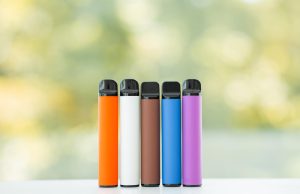Although cigarette smoking in public indoor spaces is prohibited all around the U.S. as it is in all other developed countries, rules about vaping in such spaces are inconsistent and vary from place to place, hence expectations are unclear. Dr Shu-Hong Zhu and her team from the Department of Family Medicine and Public Health at UCSD, conducted this study with the aim of examining this behaviour and the attitudes that lead to it.
The study findings
The research results showed that a significant 74.2% of the 59.5% who vaped in no-smoking areas were young adults aged between 18 and 29, with most of these being regular e-cigarette users. The smoke-free spaces that vapers were most likely to use were entertainment service venues such as bars, restaurants and clubs, amounting to 30.7%, followed by workplaces at 23.5%.
Many of the e-cigarette users in this study firmly believe that vaping products are not harmful to themselves or bystanders, with those who do vape in smoke-free zones naturally being more likely to hold this belief, hence they oppose a ban in public spaces. Aside from this only 2.5% of those who vaped in public spaces received negative reactions from bystanders, therefore the lack of opposition is thought to be a contributor to their views.
The need for specific rules in relation to vaping indoors
This report concluded that although the FDA has regulated e-cigarettes as tobacco products, e-cigarette users and a big chunk of the public does not consider them as cigarettes and hence do not believe that the same laws that apply to smoking should apply to these devices. Therefore if authorities wish to ban the use of vaporizers in public indoor spaces, specific and explicit regulations need to be issued.
Shi, Y., Cummins, S. E., & Zhu, S. H. (2016). Use of electronic cigarettes in smoke-free environments. Tobacco Control, tobaccocontrol-2016.













Some also eat peppermints, or drink coffee in the same places, so what’s the problem? If they’re not smoking, then smoke-free regulations do not apply. Smoking bans were imposed on very flimsy “evidence” of harm from second-hand smoke exposure. There is no, repeat NO, evidence of harm from second-hand vaping.
“Therefore if authorities wish to ban the use of vaporizers in public indoor spaces, specific and explicit regulations need to be issued.”
Or, if they wish to use logic and common sense, they don’t need to issue any bans.